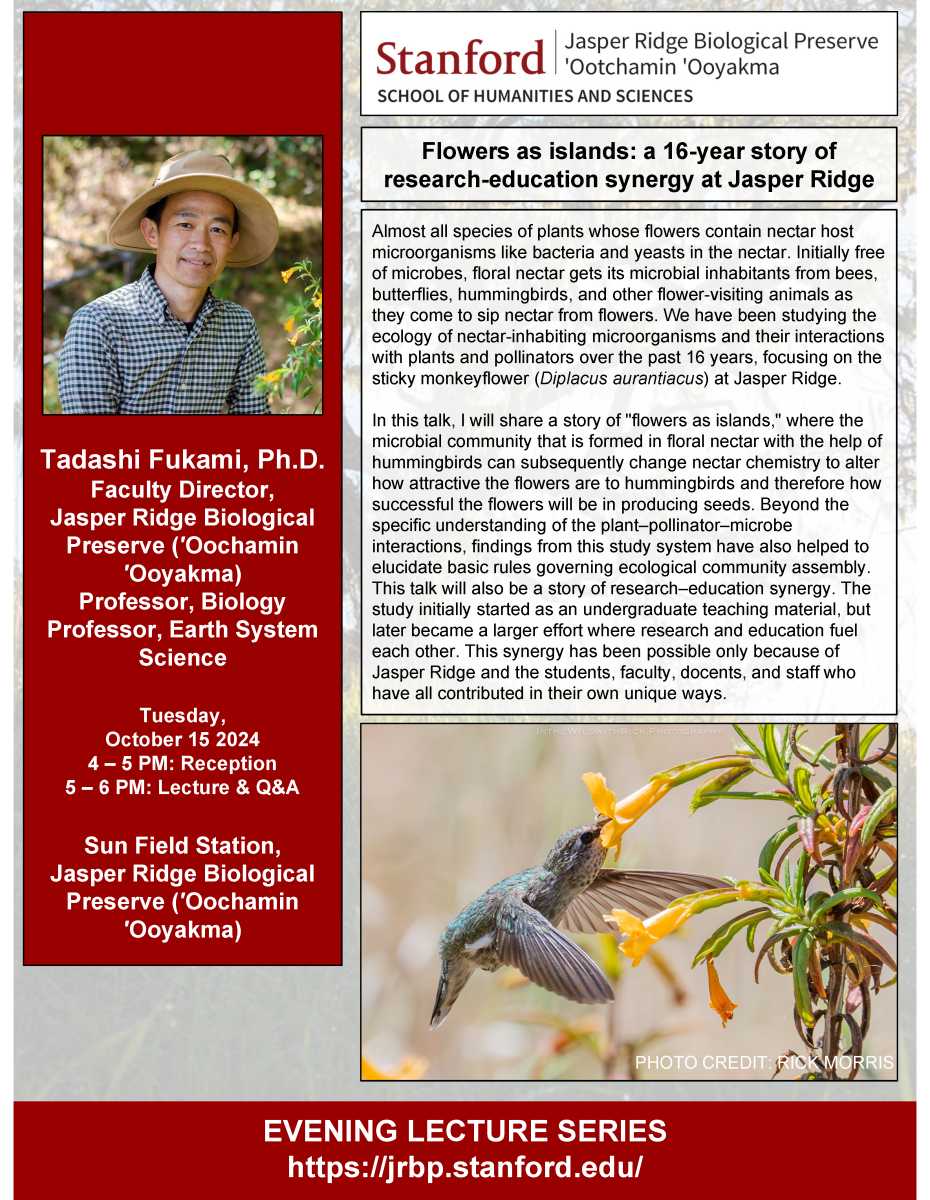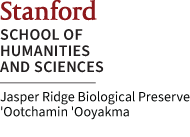Flowers as islands: a 16-year story of research–education synergy at Jasper Ridge

Photo by Rick Morris
Tadashi Fukami, Ph.D., Professor of Biology and Earth System Science, Faculty Director of Jasper Ridge Biological Preserve ('Ootchamin 'Ooyakma)
Almost all species of plants whose flowers contain nectar host microorganisms like bacteria and yeasts in the nectar. Initially free of microbes, floral nectar gets its microbial inhabitants from bees, butterflies, hummingbirds, and other flower-visiting animals as they come to sip nectar from flowers. We have been studying the ecology of nectar-inhabiting microorganisms and their interactions with plants and pollinators over the past 16 years, focusing on the sticky monkeyflower (Diplacus aurantiacus) at Jasper Ridge. In this talk, I will share a story of "flowers as islands," where the microbial community that is formed in floral nectar with the help of hummingbirds can subsequently change nectar chemistry to alter how attractive the flowers are to hummingbirds and therefore how successful the flowers will be in producing seeds. Beyond the specific understanding of the plant–pollinator–microbe interactions, findings from this study system have also helped to elucidate basic rules governing ecological community assembly. This talk will also be a story of research–education synergy. The study initially started as an undergraduate teaching material, but later became a larger effort where research and education fuel each other. This synergy has been possible only because of Jasper Ridge and the students, faculty, docents, and staff who have all contributed in their own unique ways.
Tuesday, October 15, 2024
4-5 PM Reception
5-6 PM Lecture & Q&A
Sun Field Station, JRBP ('O'O)




